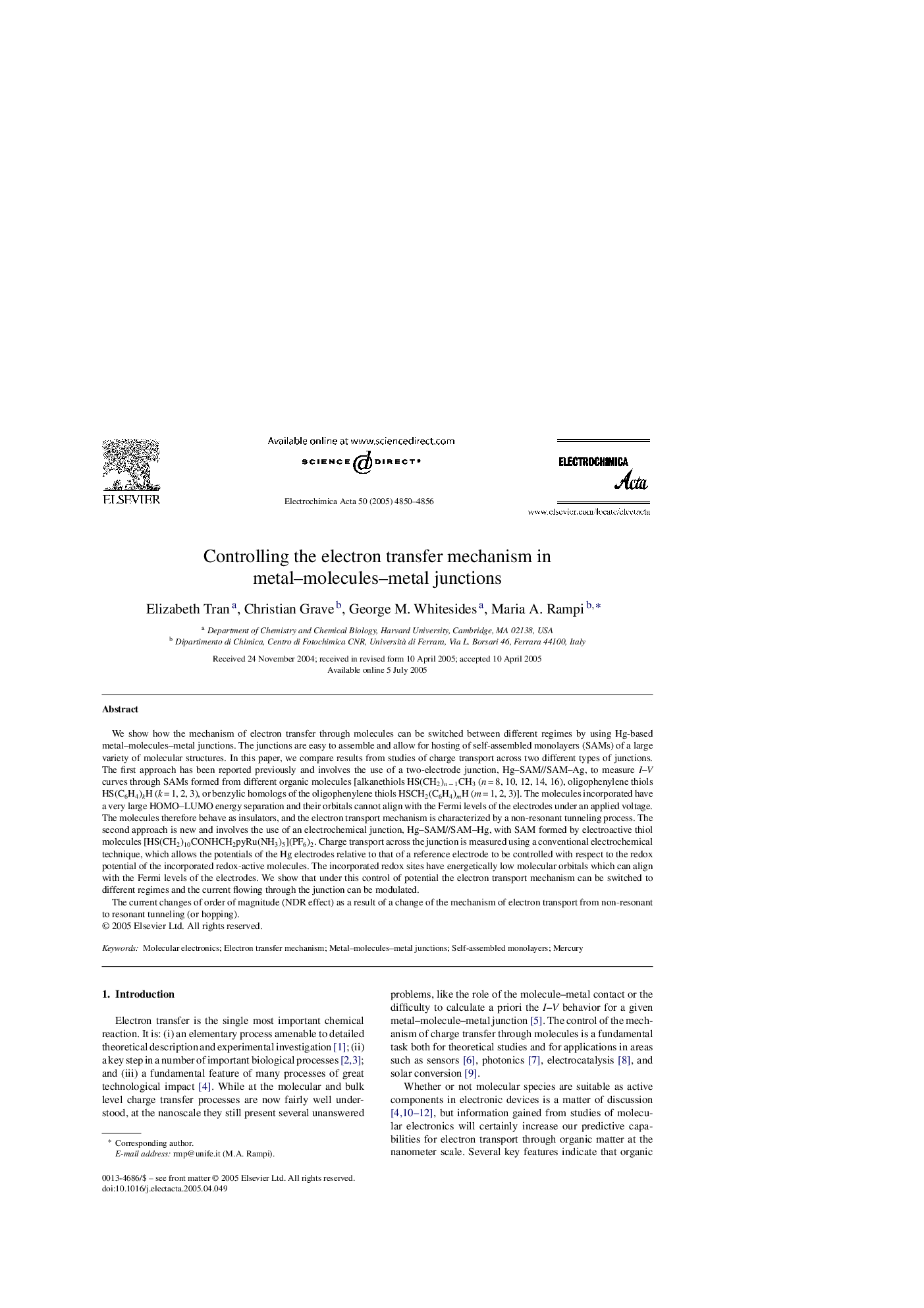| کد مقاله | کد نشریه | سال انتشار | مقاله انگلیسی | نسخه تمام متن |
|---|---|---|---|---|
| 197006 | 459867 | 2005 | 7 صفحه PDF | دانلود رایگان |

We show how the mechanism of electron transfer through molecules can be switched between different regimes by using Hg-based metal–molecules–metal junctions. The junctions are easy to assemble and allow for hosting of self-assembled monolayers (SAMs) of a large variety of molecular structures. In this paper, we compare results from studies of charge transport across two different types of junctions. The first approach has been reported previously and involves the use of a two-electrode junction, Hg–SAM//SAM–Ag, to measure I–V curves through SAMs formed from different organic molecules [alkanethiols HS(CH2)n − 1CH3 (n = 8, 10, 12, 14, 16), oligophenylene thiols HS(C6H4)kH (k = 1, 2, 3), or benzylic homologs of the oligophenylene thiols HSCH2(C6H4)mH (m = 1, 2, 3)]. The molecules incorporated have a very large HOMO–LUMO energy separation and their orbitals cannot align with the Fermi levels of the electrodes under an applied voltage. The molecules therefore behave as insulators, and the electron transport mechanism is characterized by a non-resonant tunneling process. The second approach is new and involves the use of an electrochemical junction, Hg–SAM//SAM–Hg, with SAM formed by electroactive thiol molecules [HS(CH2)10CONHCH2pyRu(NH3)5](PF6)2. Charge transport across the junction is measured using a conventional electrochemical technique, which allows the potentials of the Hg electrodes relative to that of a reference electrode to be controlled with respect to the redox potential of the incorporated redox-active molecules. The incorporated redox sites have energetically low molecular orbitals which can align with the Fermi levels of the electrodes. We show that under this control of potential the electron transport mechanism can be switched to different regimes and the current flowing through the junction can be modulated.The current changes of order of magnitude (NDR effect) as a result of a change of the mechanism of electron transport from non-resonant to resonant tunneling (or hopping).
Journal: Electrochimica Acta - Volume 50, Issues 25–26, 5 September 2005, Pages 4850–4856